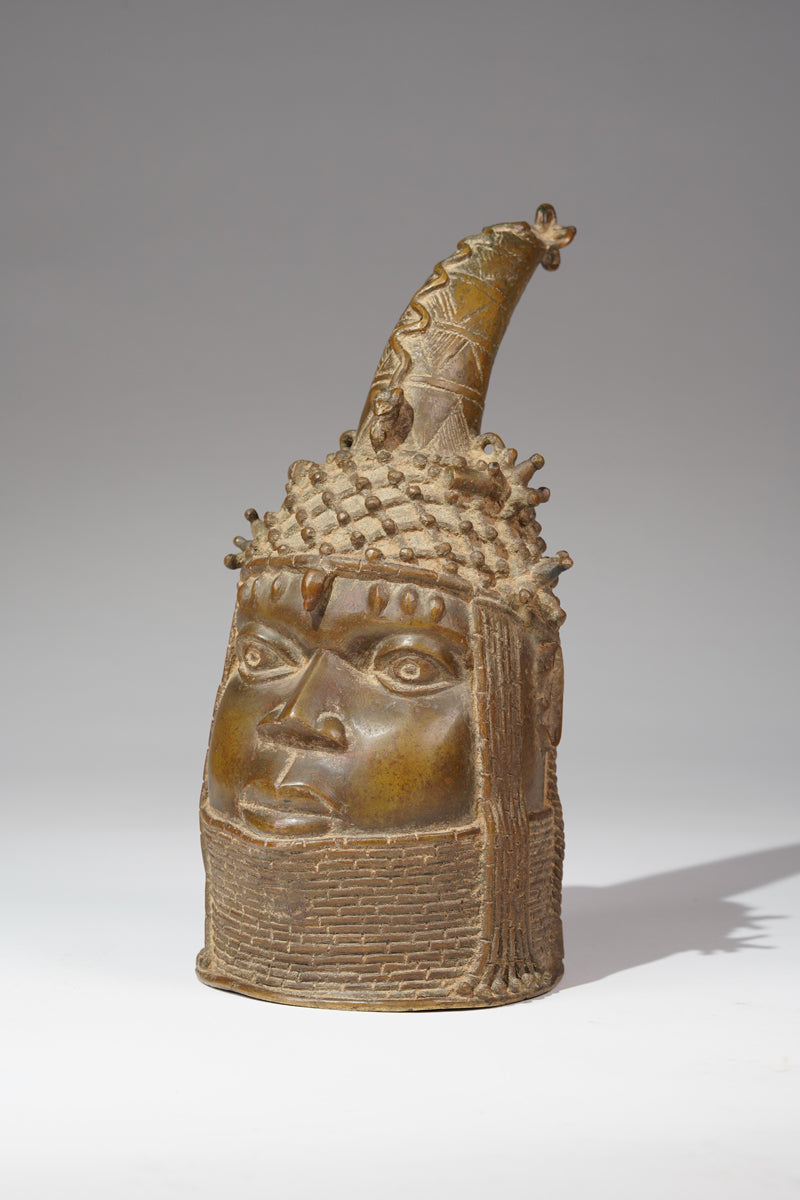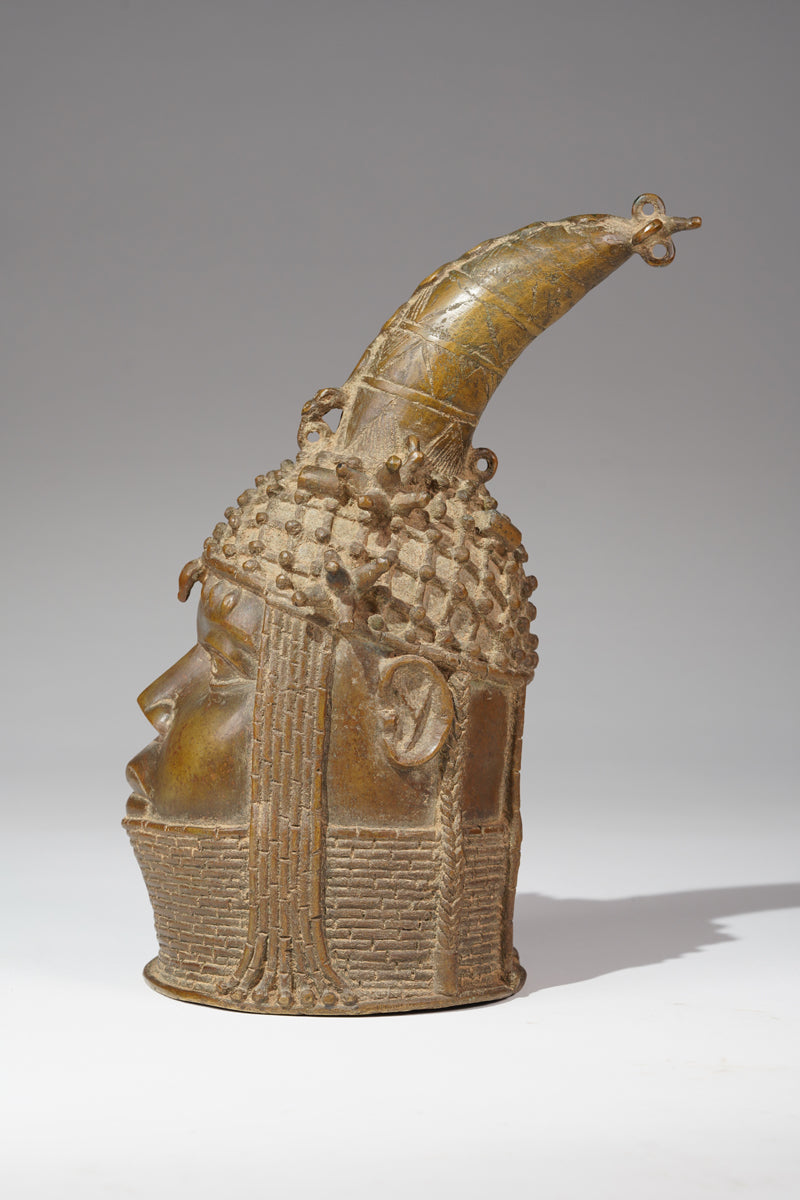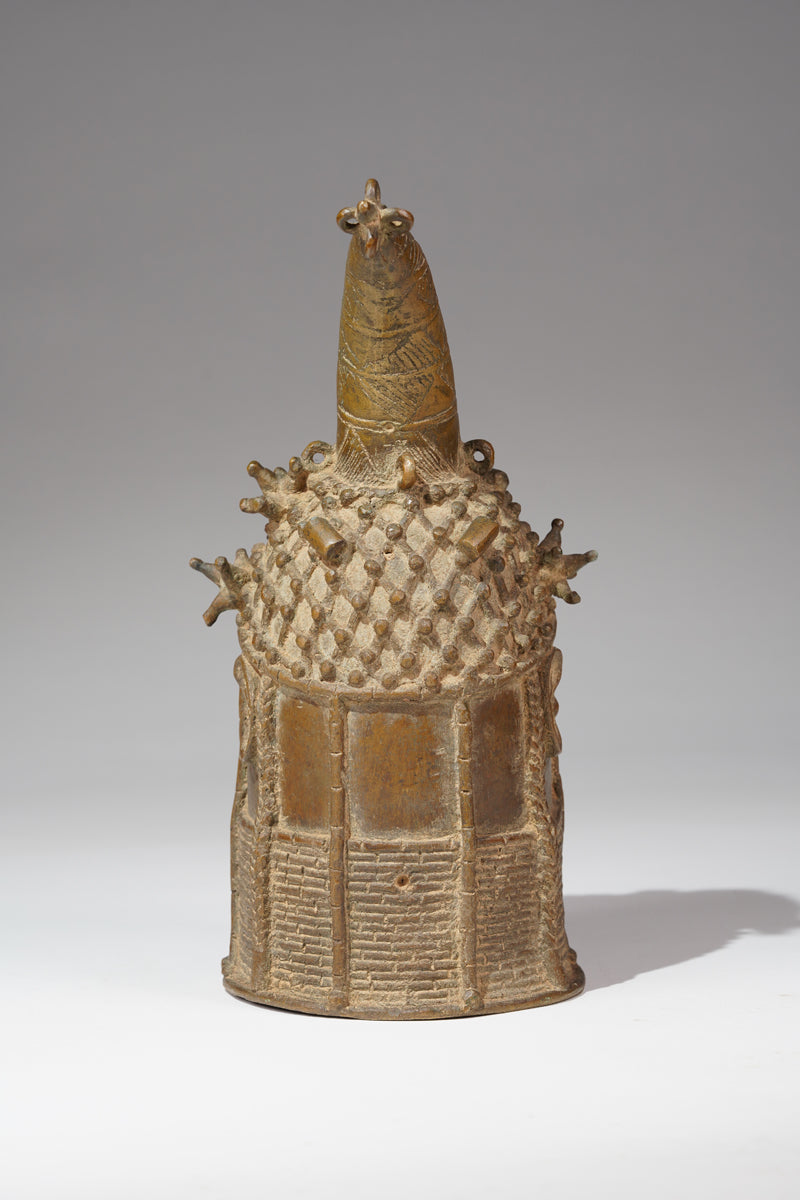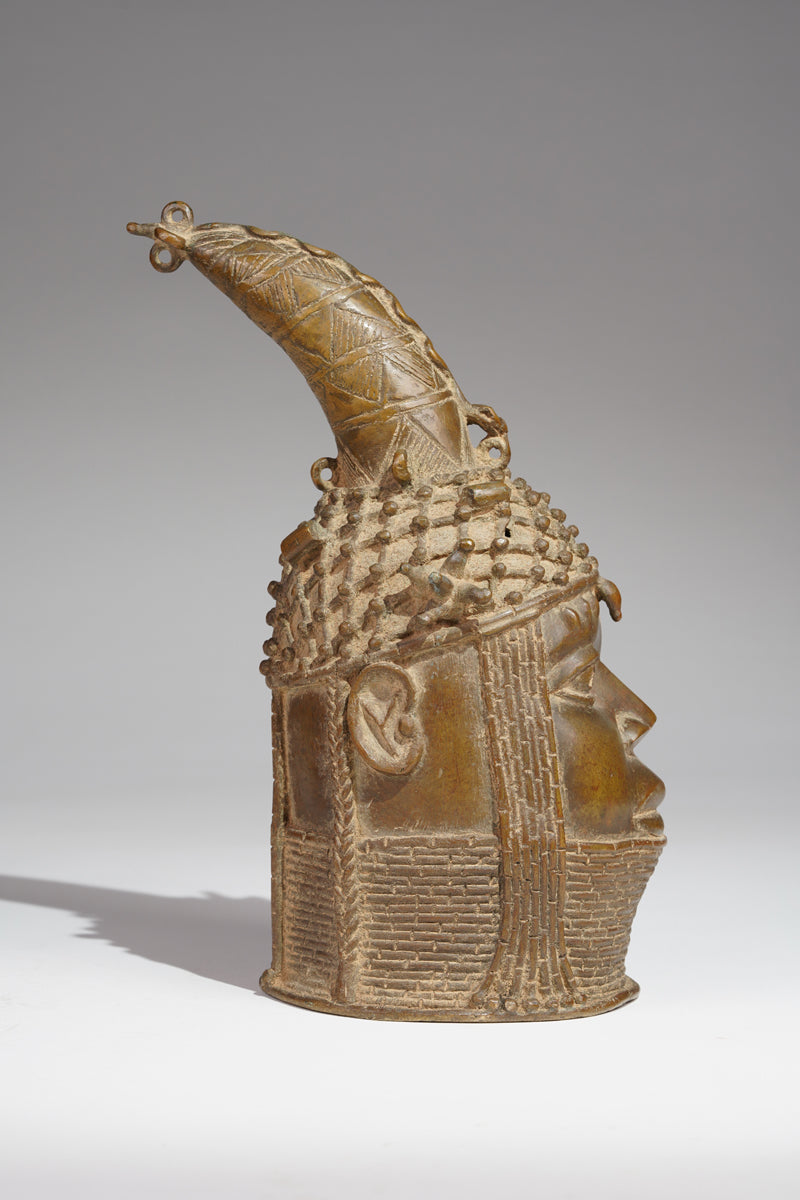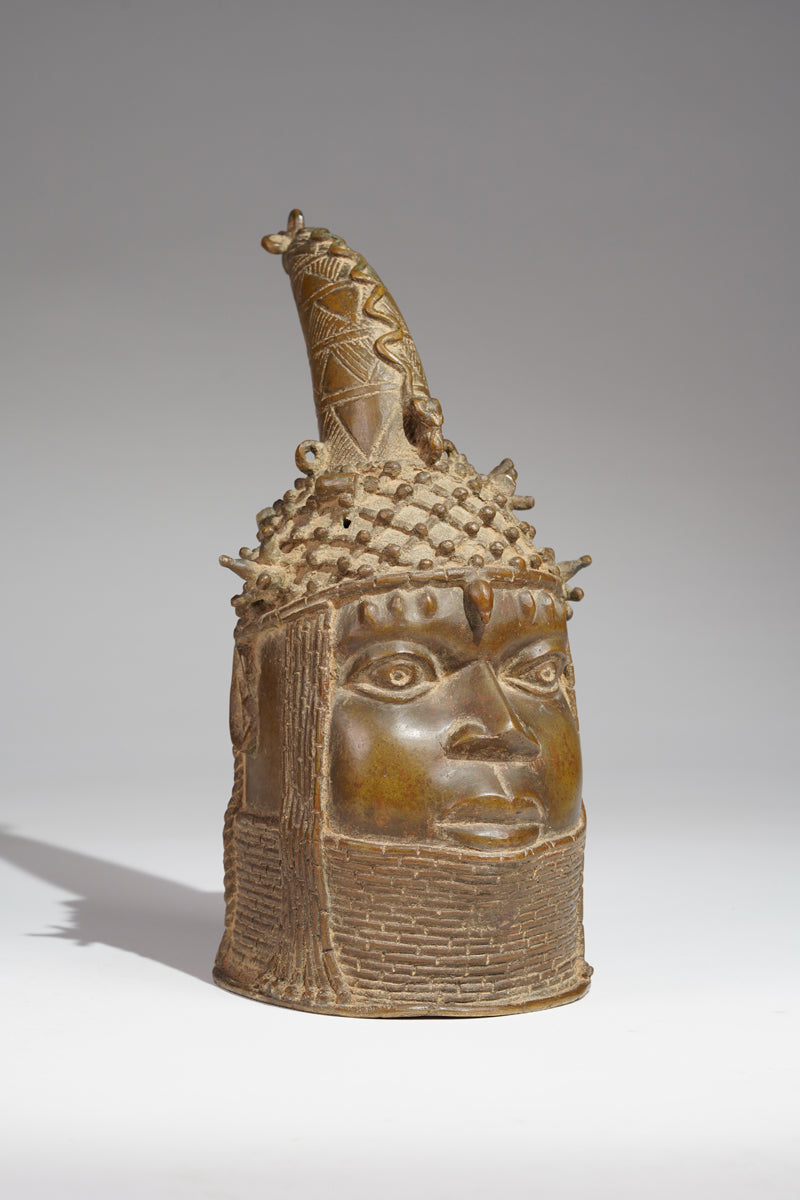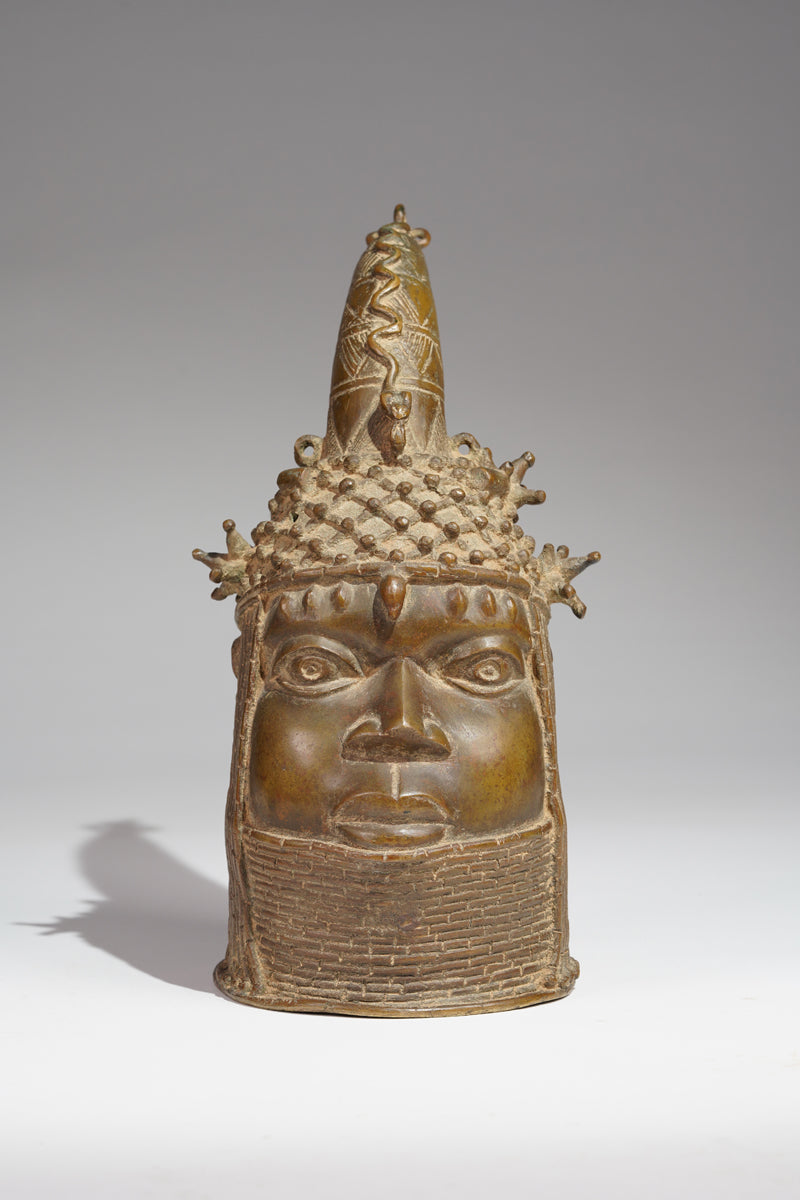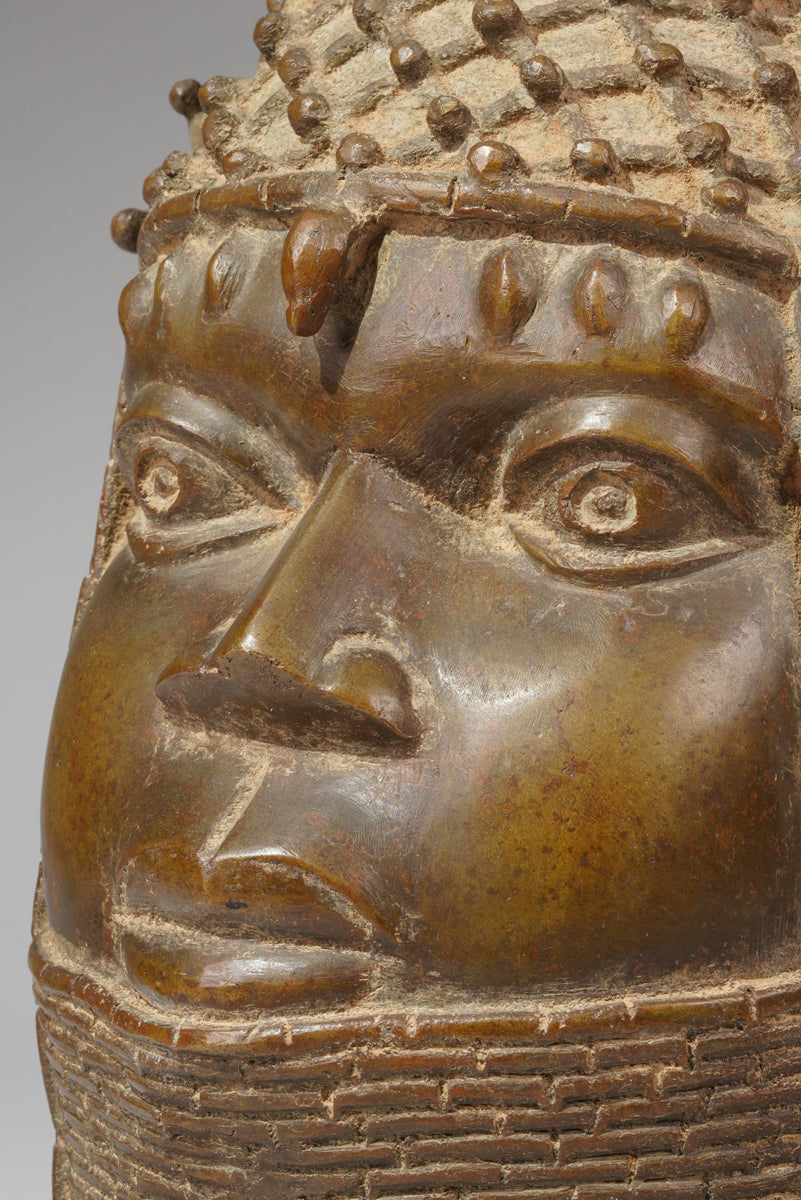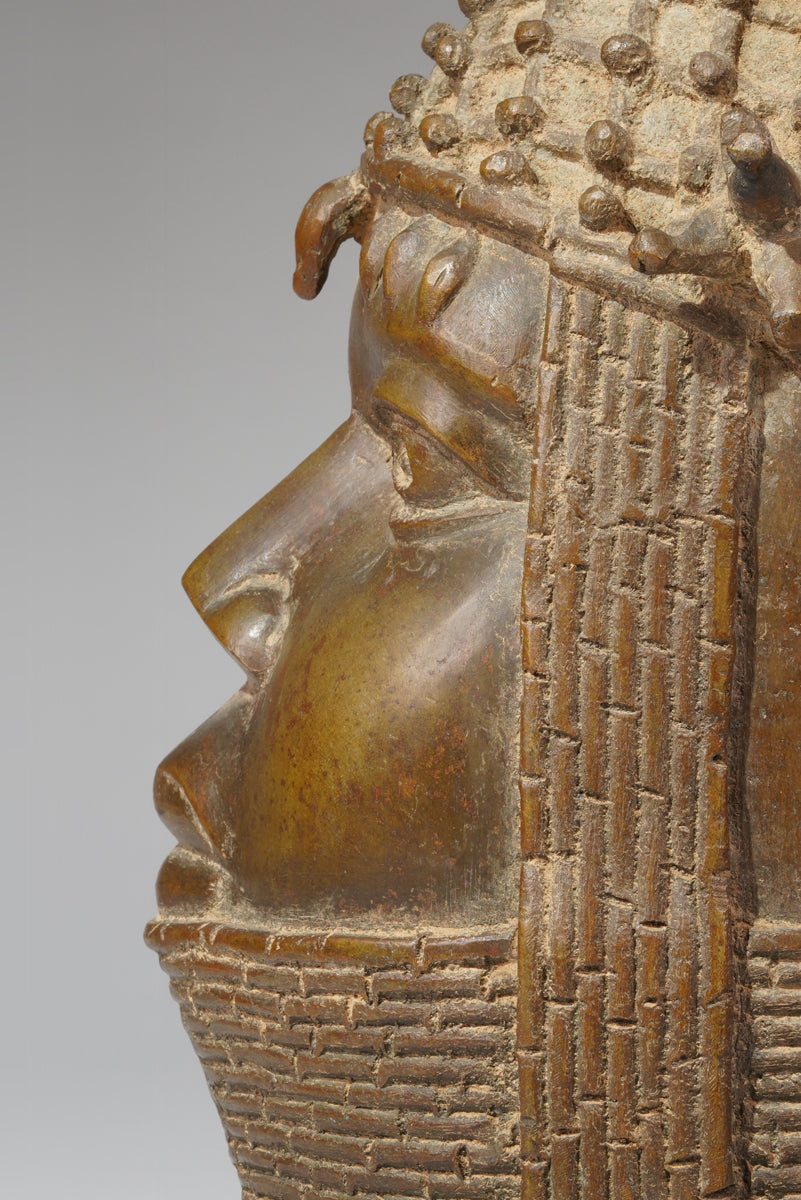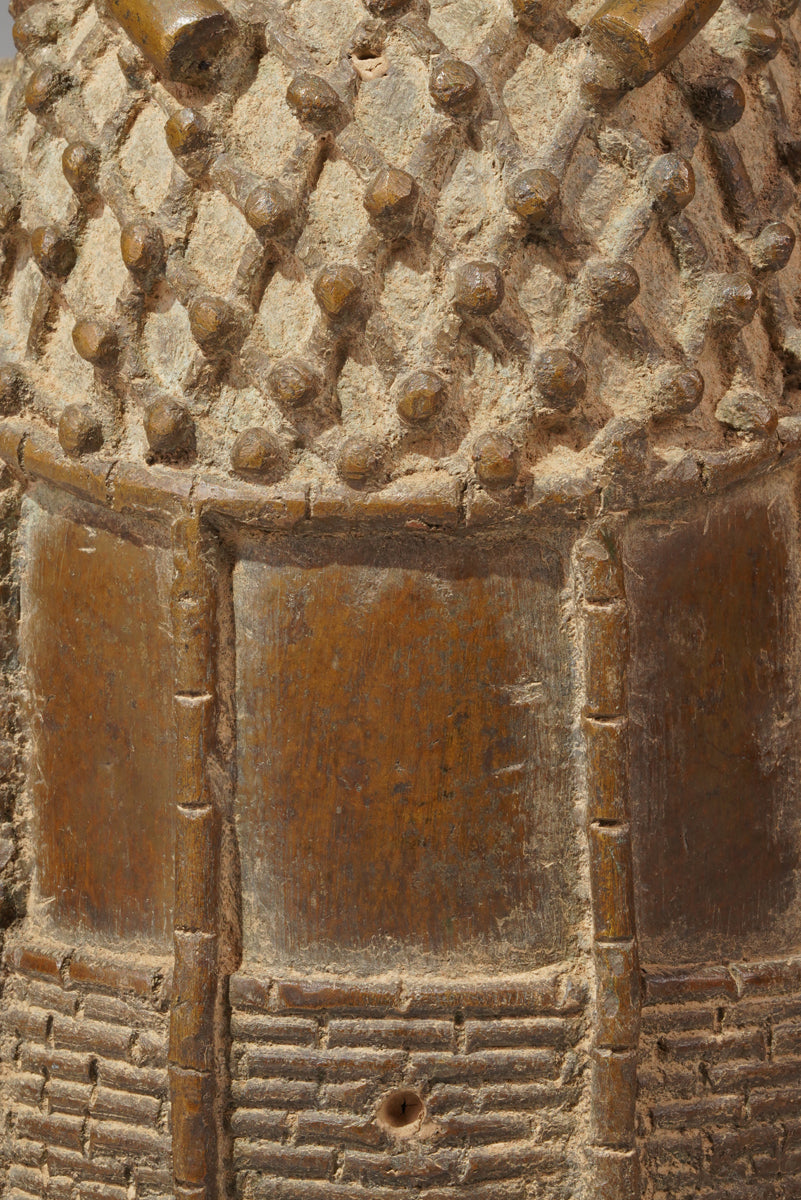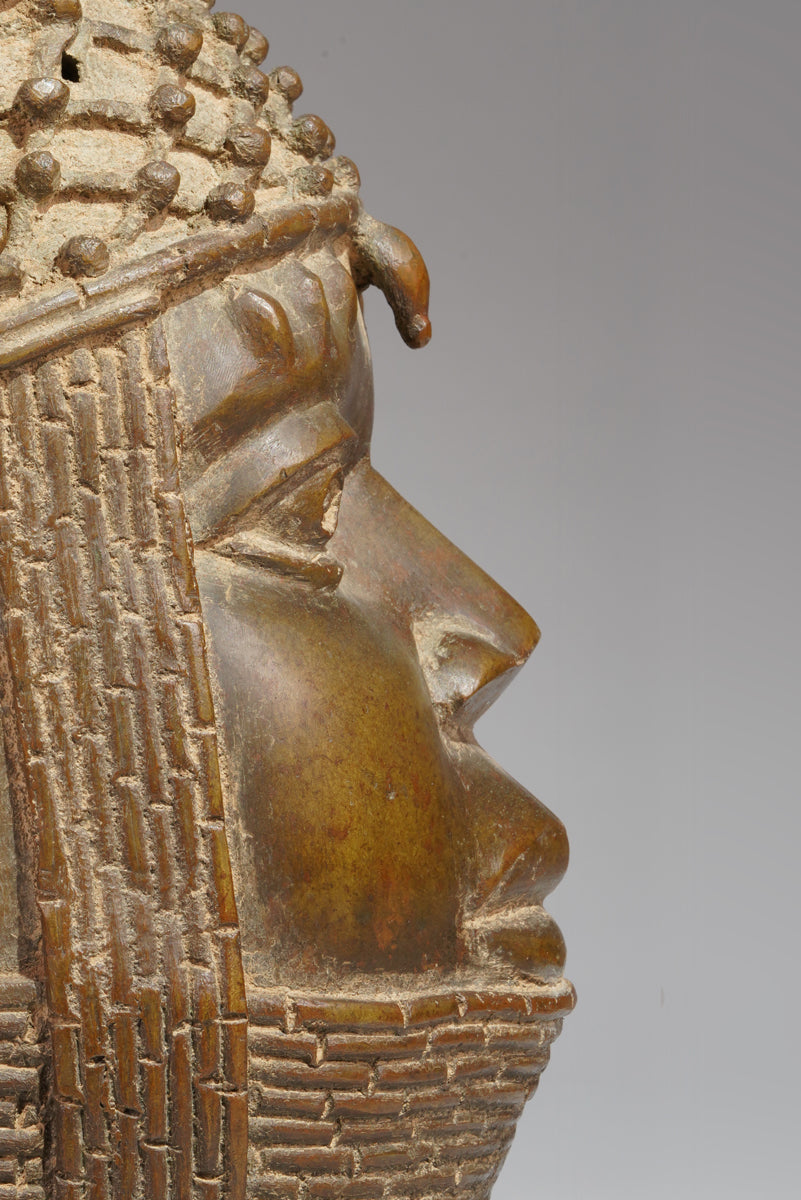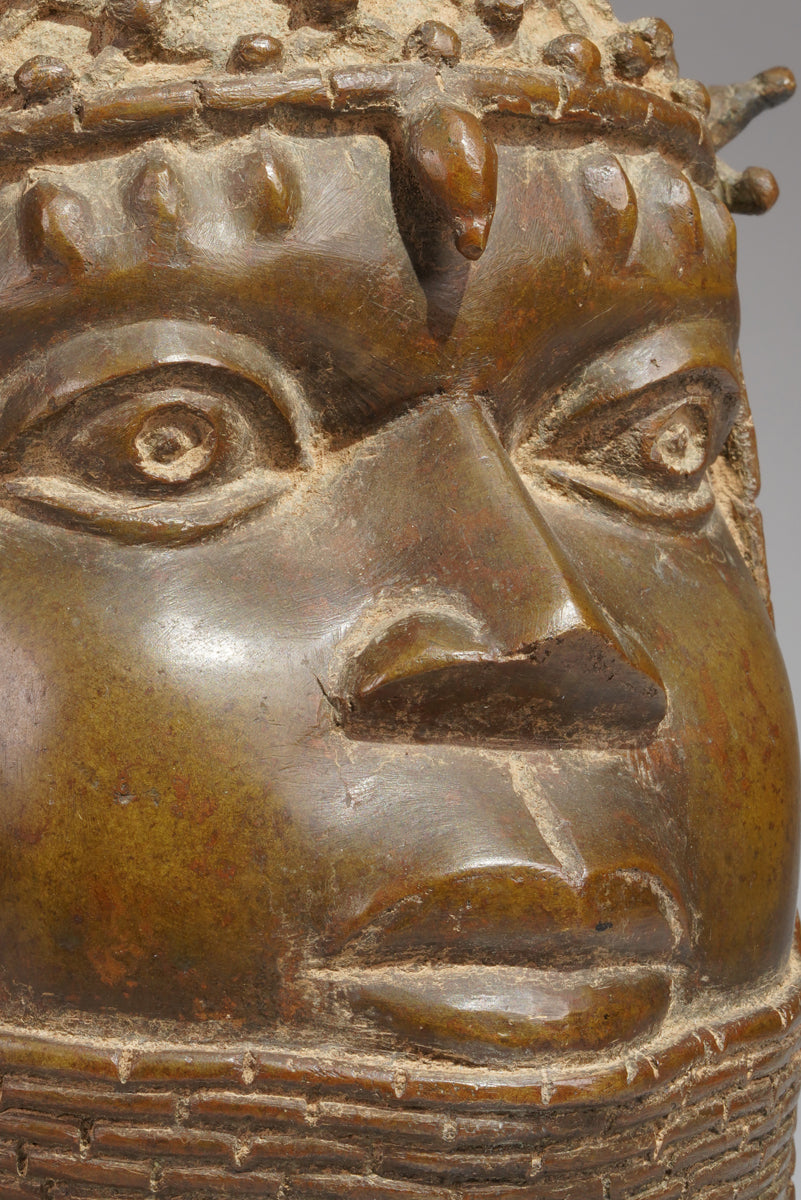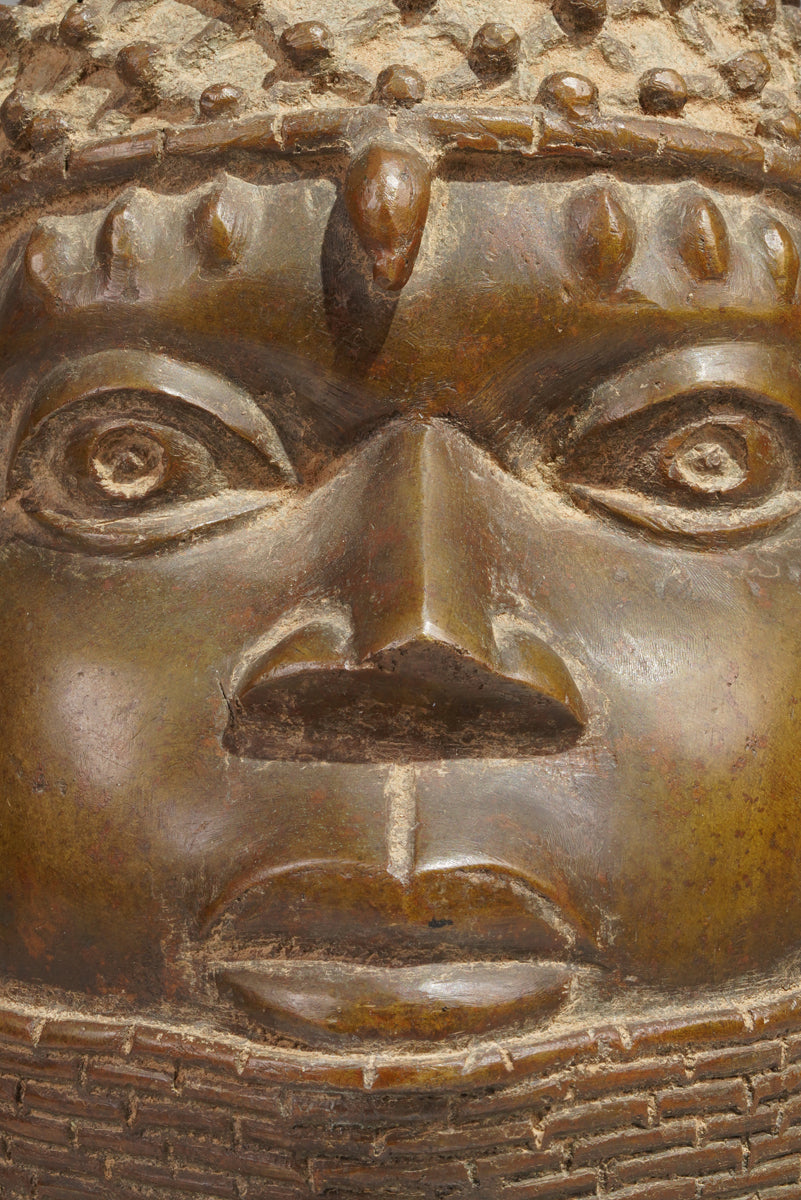Galerie Wolfgang Jaenicke
An Uhunmwu Elao commemorative head
An Uhunmwu Elao commemorative head
Couldn't load pickup availability
An Uhunmwu Elao commemorative head with a curved "elephant tusk", made of bronze (brass) like the whole sculpture, decorated with a serpent; fine aged and oxidised patina of a head, which obviously were placed on the altar and not found in the ground.
An Ọba placed at the king’s ancestral shrine could be made from bronze, wood or terra-cotta. The altar consists of a commemorative head that supported the carved ivory tusk. It could have a circular base or a rectangular-shaped base. However, they all have a unifying feature, which is the hole at the centre in which the tusk is placed.
The commemorative heads that have survived in large numbers from this period are strongly formalized. Their faces are largely identical, but the royal insignia are more elaborate and their shapes vary. What they all have in common is the cap made of coral beads. Various motifs on a plinth around the base refer to the king's spiritual power. At the same time, the heads are becoming larger and their wall thickness is significantly thicker. In fact, on the altars of the 18th and 19th centuries, the commemorative heads also serve as a basis for large elephant teeth carved with motifs that were depicted on the relief panels in the early days of Benin, in the 16th and 17th centuries.
After the death of an Oba, an altar was built for him in a closed courtyard of the Benin palace. One of the most important objects on these altars were memorial heads of the deceased cast from brass.A carved ivory tusk once rose from the calotte of these commemorative heads. Extensive rituals and regular sacrifices at this altar by the successor confirmed his ties to the royal ancestors and increased his spiritual power. See Digital Benin, the Uhunmwu-Elao commemorative heads.
Lit.: Felix von Luschan, Die Altertümer von Benin, Band 1, Berlin 1919, S. 355-358. Philip J. C. Dark: An introduction to Benin art and technology, Oxford 1973, S. 95.William Fagg, Bildwerke aus Nigeria, München 1963, S. 44. Armand Duchateau Benin. Kunst einer Afrikanischen Königskultur, München 1995, S. 45-53.
Height: 32 cm
Weight: 5,1 kg













